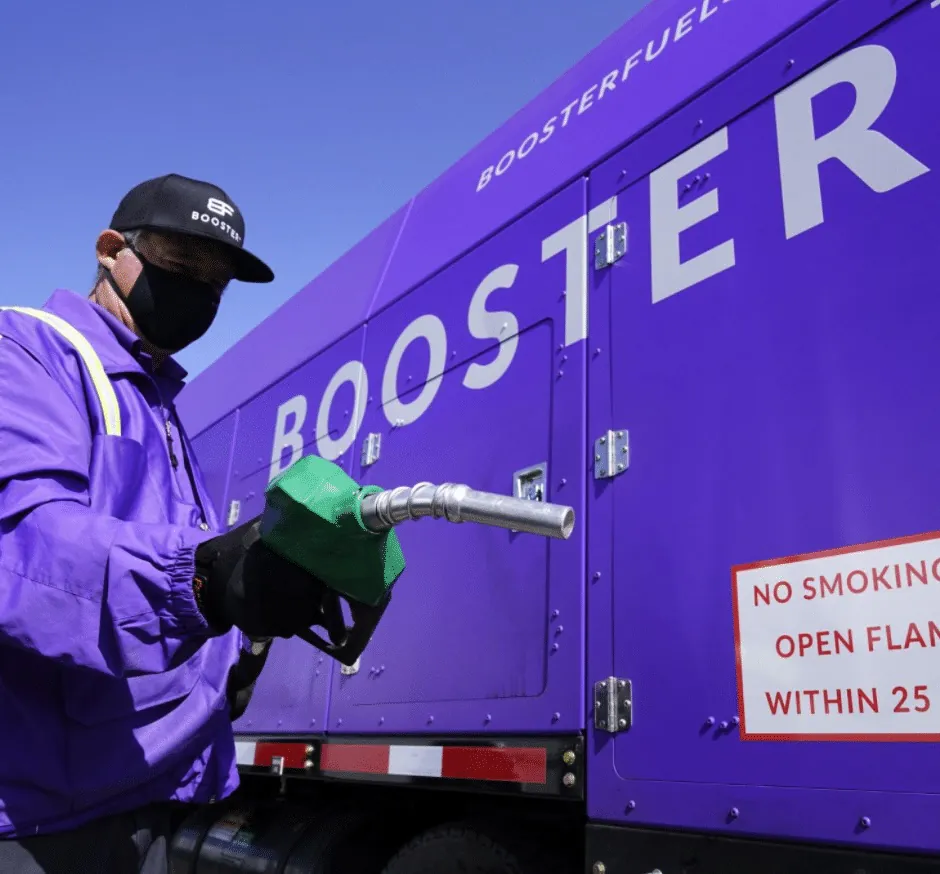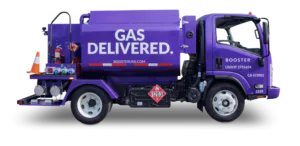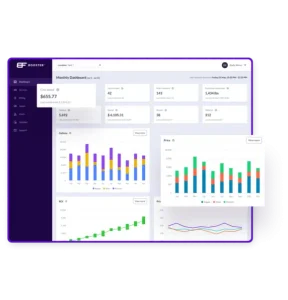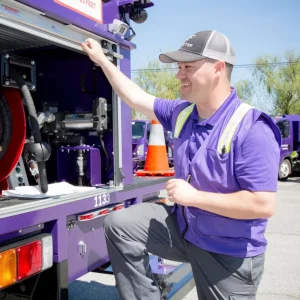

Meet Our Mobile Fuel Delivery Service
For Every Industry
The fuel that powers your business should be effortless and guilt-free. Booster brings that fuel directly to you, delivered with the Perfect Boost.
Talk to someone on our team to learn about our industry-specific offerings so you can fully understand the customizable aspects of bulk fuel delivery in your area.
Revolutionary Mobile Energy Delivery:
We Bring the Gas Station to You
Booster delivers gasoline, diesel and more directly to your vehicles so your drivers avoid unnecessary trips to the gas station.
Save your team time and streamline your operations via our 100% contactless, on-site solution that is better for you, your team, and your community.
Booster - Who We Are and What We Do
2:05
Schedule an On-Site Delivery
When you schedule an on-site fuel delivery for the fuel type of your choice, just sit back and enjoy not having to make the trip to the gas station.
Our pricing engine works to find you the best fuel prices for your local area.
We pick up the fuel for you. Our proprietary Smart Tankers can fill up directly at the source.
Our technology and processes are certified by the highest safety standards.
Follow Our Progress
Trust us to deliver to you during times that best suit your fleet’s schedule. We deliver 24/7.
Our proprietary Routing AI plans the optimal route to arrive at your fueling location.
Our cloud-connected Smart Tankers come with onboard IoT to provide real-time situational data to maximize on-route efficiency.
Our Fleet Portal lets you monitor our progress along the way.
Get Boosted
When we arrive at your location, our trained staff fuels every vehicle in your fleet that needs a top up. No need to be take time out of your schedule to monitor the delivery. Rest assured that your fleet will be ready to go!
After every fueling, we provide you with insights and critical information, like gallons used and fuel spend, to help you maximize your fleet’s efficiency.
Our Fleet Portal also allows you to manage all your invoices & reconcile your fuel spend with full transparency.
The Benefits of Mobile Fuel Delivery
Starting each day with full tanks of fuel helps keep your team focused on the productive activities that impact your bottom line. More than convenience, fleet fuel delivery unlocks savings that get you way more for your gas money.
Our Technology is Our Advantage
What makes our commitment to the Perfect Boost possible is not only our focus on operational excellence but our commitment to bringing the best available technologies to every aspect of our service.


Explore All Our Fuel Options
We offer a variety of high quality, well-priced fuel options when you schedule through our dashboard.
Gasoline
We deliver high-quality blend gasoline, purchased wholesale from the source, directly into your vehicle.
ExploreDiesel
Diesel fuel is the dominant choice for the heavy-duty trucking, freight, and logistics industries. Our Smart Tankers are fully equipped to deliver ultra-low sulfur diesel to meet the demands of any mixed fleet.
ExploreDiesel Exhaust Fluid (DEF)
Diesel Exhaust Fluid (DEF) is an option to help heavy-duty trucks and machinery operate within standards set by the EPA. We bring DEF straight to you in tanks or self-dispensing jugs.
ExploreRenewable Diesel
Replacing traditional diesel with biodiesel can reduce emissions by up to 70% with almost no overhead or equipment replacement. With our exclusive access via our partners, we can help you in your fuel transition.
Explore
-
Always Looking to Do More
We also offer a variety of specialty services.
- Emergency Fuel Delivery: We’re here to help your team deliver to your community even in the most trying times. Ask about our emergency delivery options.
- Underground Fuel Tank Mitigation: We help to do away with antiquated and environmentally unfriendly underground fuel storage tanks (USTs).
- Energy Delivery: We are always keeping an eye out for new fuel and energy options and ways to launch them at scale for you. Our latest is a foray into providing mobile electric charging.
Maximize Your Fueling Efficiency
It can be hard to imagine a different way of powering your fleet. Booster’s commitment to sustainability means we are here to help you consider your options and can be your full service partner as your team explores new fuel types and considers joining the energy transition.
Meet with qualified advisors who can help you audit your current equipment for cost-efficient fuel transition advice.
We can help you explore the different fueling options available in your location and optimize for your company’s bottom line and long-term fuel availability.
We give you the resources to make the best sustainability decision for your team in this moment.
